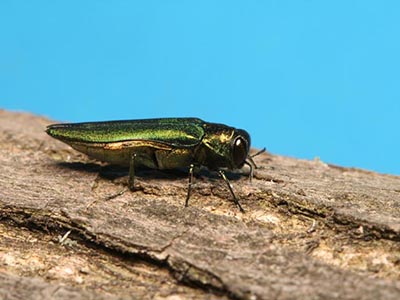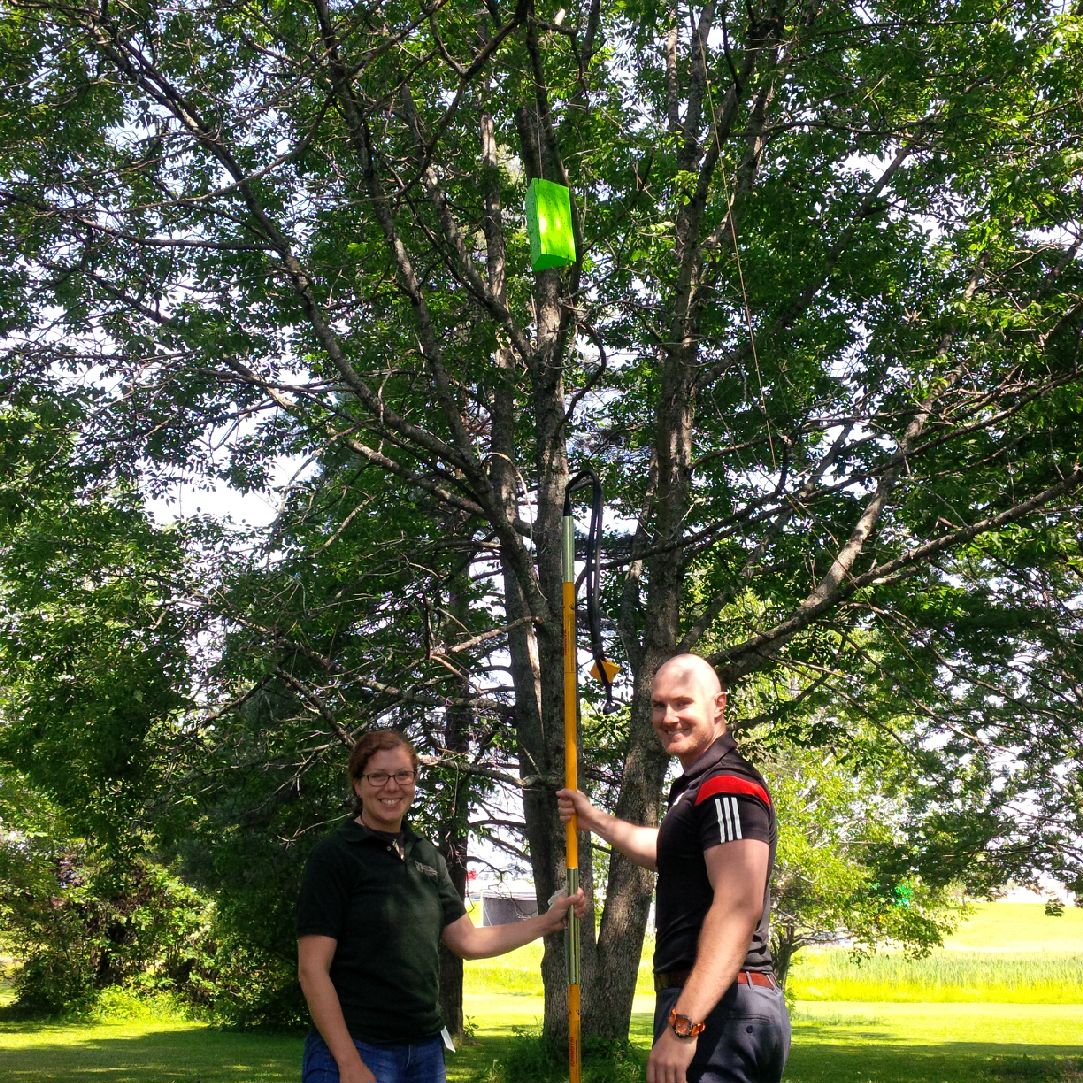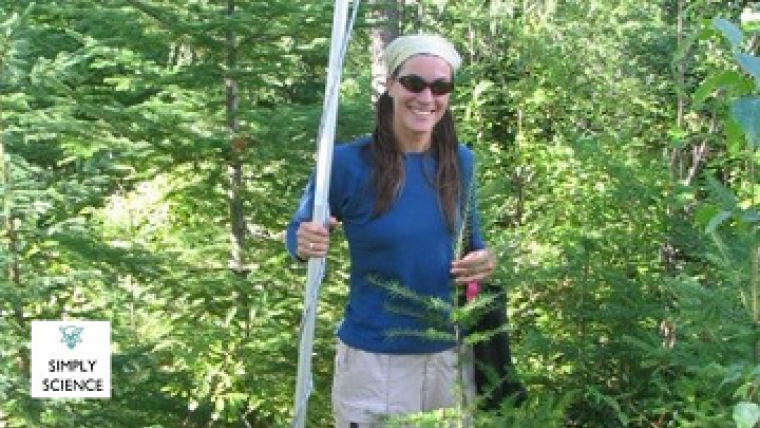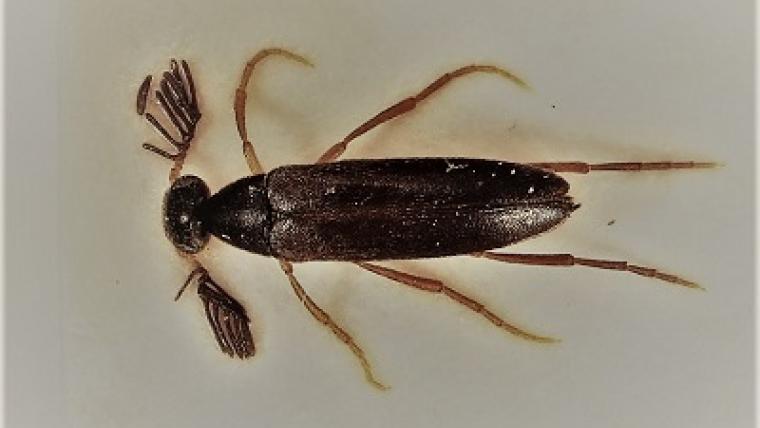Fighting the emerald ash borer with science
By Shirley Pegler
May 31, 2018
Fighting the emerald ash borer with science
Over the last 16 years, an army of emerald ash borers (EAB), an invasive insect species from Asia, has spread across Ontario, Quebec, New Brunswick, and now Nova Scotia, killing tens of millions of ash trees.

Larger image
Emerald ash borer
Scientists from the Canadian Forest Service (CFS) and beyond have declared war on the EAB and are waging battle on several fronts: developing trapping methods for early detection; introducing parasitic wasps as biocontrol weapons; and using a naturally occurring fungus that is potent against EAB.
Ash trees are one of only 126 native tree species in Canada, so losing them is a big blow to biodiversity. As well, the costs of treatment, removal and replacement of trees affected by the EAB in Canadian municipalities may reach $2 billion over a 30-year period.
The loss of ash trees has an impact in both urban and rural areas. Cityscapes will be altered for decades, with reduced shade and hazardous dead trees. Indigenous people will no longer have ash trees to make baskets. And makers of furniture, baseball bats and many other products will have to look to other species of hardwoods.
Here’s how science is helping to mitigate the insect’s effects.

Larger image
Kate Van Rooyen and Dr. Lucas Roscoe with emerald ash borer trap
Pheromones for better traps
Municipalities and provinces need to know where the EAB is and how quickly it is moving. Thanks to a made-in-Canada lure and a unique trap design, foresters have a new detection tool. Dr. Peter Silk, a chemical ecologist at the Atlantic Forestry Centre in Fredericton, identified the EAB sex pheromone and then synthesized this unique chemical signature to create an effective lure for trapping.
To find the best trap for the lure, he collaborated with Dr. Krista Ryall, a research scientist at the Great Lakes Forestry Centre in Sault Ste. Marie. They found that combining the pheromone lure with a green prism trap, positioned in the mid to upper tree canopy, significantly improved captures of the insect. These traps — a simple box made from corrugated plastic coated with adhesive and baited with the specialized lure — are now commercially available and in use across North America.
Biological controls
Building on research in the United States, Dr. Krista Ryall started a classical biocontrol program of using parasitic wasps to attack the EAB. As the only long-term and possibly sustainable option for managing EAB, Dr. Ryall and her colleagues developed their own colony of two species of parasitic wasps to slow or limit the spread of the EAB: tiny Tetrastichus planipennisi wasps that end up killing the host insects on which they feed, and Oobius agrili wasps that attack the EAB eggs.
Larger image
Damage caused by emerald ash borer
Early results in the United States are promising, with high establishment rates of at least two parasitoid species and a reduced rate of growth of EAB populations. Since 2013, over 100,000 wasps have been released at 20 sites across Ontario and Quebec, with further releases planned for Winnipeg in 2018.
At the Laurentian Forestry Centre in Quebec City, Dr. Robert Lavallée has conducted some very successful research on an alternative to synthetic pesticides: naturally occurring pathogenic fungi. Spores from these fungi are added to traps, causing lethal disease in the EAB. The process is straightforward: when an adult EAB enters, it is exposed to lethal spores and later transmits them to other insects during mating; the infected EABs then die within days. The aim is to commercialize the traps that include pathogenic fungi.
This summer, Dr. Lavallée plans to establish an open-air laboratory in and around Quebec City to conduct integrated research on the detection and dispersion of the emerald ash borer in urban areas. Projects will explore nine avenues of EAB research, including the use of different traps, biological control and citizen science. They will also involve new strategies, such as modelling the dispersion of the borer in an urban environment and designing a molecular detection tool.
Targeted insecticide
To slow down the impact of the EAB, CFS scientists collaborated with BioForest Technologies Inc. to develop TreeAzin™, a systemic insecticide injected into the tree. This product protects individual high-value ash trees and trees in isolated infestations. TreeAzin™ is derived from oil in the seeds of the neem tree, a member of the mahogany family. Now commercially available, TreeAzin™ is being used by numerous municipalities and tree care companies as one component of their emerald ash borer management strategy.
Conserving ash seeds
The CFS National Tree Seed Centre has taken the lead in Canada in collecting ash seed for future restoration activities. Public and organizations can learn about ash conservation and how to collect seed.
How you can help
Invasive species like the EAB are often accidentally spread into new environments by moving firewood. Because the area infested by emerald ash borer is expected to keep expanding, it is important that we all do our best to reduce the risk. To learn how you can help, visit Don’t Move Firewood and Identifying and Preventing the Spread of the Emerald Ash Borer.
Page details
- Date modified:


